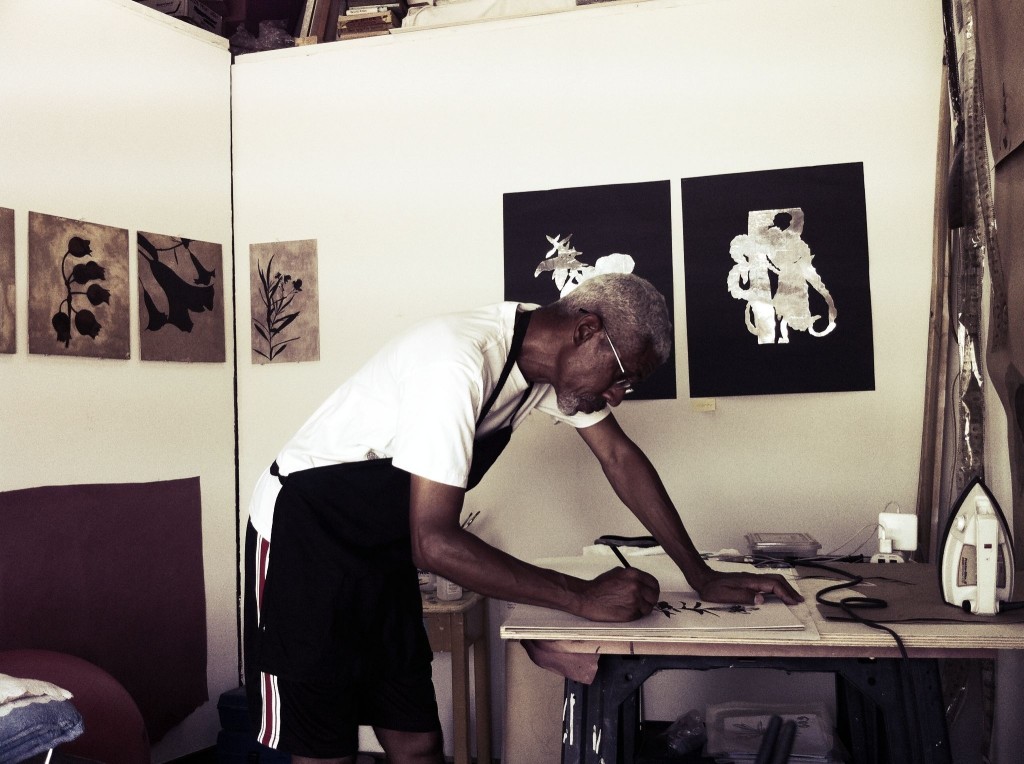
Trading studio and museum space
It’s always illuminating to visit an artist working in his or her studio. There is a permanent mystery when viewing art – where did it come from, how was it birthed? Artists themselves have also enjoyed the interaction with a form of public while in the process of creation. MOCA has latched on to both these threads and for the second time, has produced “Trading Places II” (part of its Knight Exhibition Series), where artists are invited to swap their own studios for a few months to work – usually much more publically – for space in the museum’s galleries. It’s potentially a truly community-building project.
Shabaka: works in progress.
The idea is this: several artists are picked who will both thrive in this interactive (and even invasive) environment, and who will be able to give back, to those who visit and more specifically, to the teens who are part of MOCA’s after-school programs.
It also means that we are introduced (or re-introduced?) to work of some artists who are part of our scene’s fabric – but you may not know it. Like Onajide Shabaka, who has been working as a curator, writer, mentor and yes, indeed an artist, having shown in a wide variety of exhibits for decades from California to Florida. Interestingly enough, in light of his new “public studio space,” he has described his work this way: “I have forged a path for my artistic interests that challenges the status quo of the mainstream art world, especially the hermeticism and austerity of the white cubic gallery space. At the same time, my work, in its engagement with nature, history, technology and ritual – allows the viewers to experience a more holistic view of the world.”
The Icelandic native Magnus Sigurdarson is another who has traded places for this program, an artist whose works are always intentionally unpredictable, sometimes as a result of his “trading” extreme geographical places, from the Nordic north (in all its metaphorical implications) to the sultry tropics (ditto on the implications). Performance-based artist Antonia Wright should fit right in, as part of her art is about exploring social interactions, and critiques.
Haitian-born Rick Ulysse and recent New World School of the Arts grad Dona Altemus round out the group. “One of the essential aspects of any art community is the interaction between its artists…and to engage the public in the creative process,” says MOCA director Bonnie Clearwater.
Meet the artists during “Trading Places II” tonight, Sept. 14, at 8 p.m., at MOCA, 770 N.E. 125th St., North Miami; 305-893-6211; www.mocanomi.org.
Recent Content
-
Artsarticle ·
-
Artsarticle ·
-
Artsarticle ·

